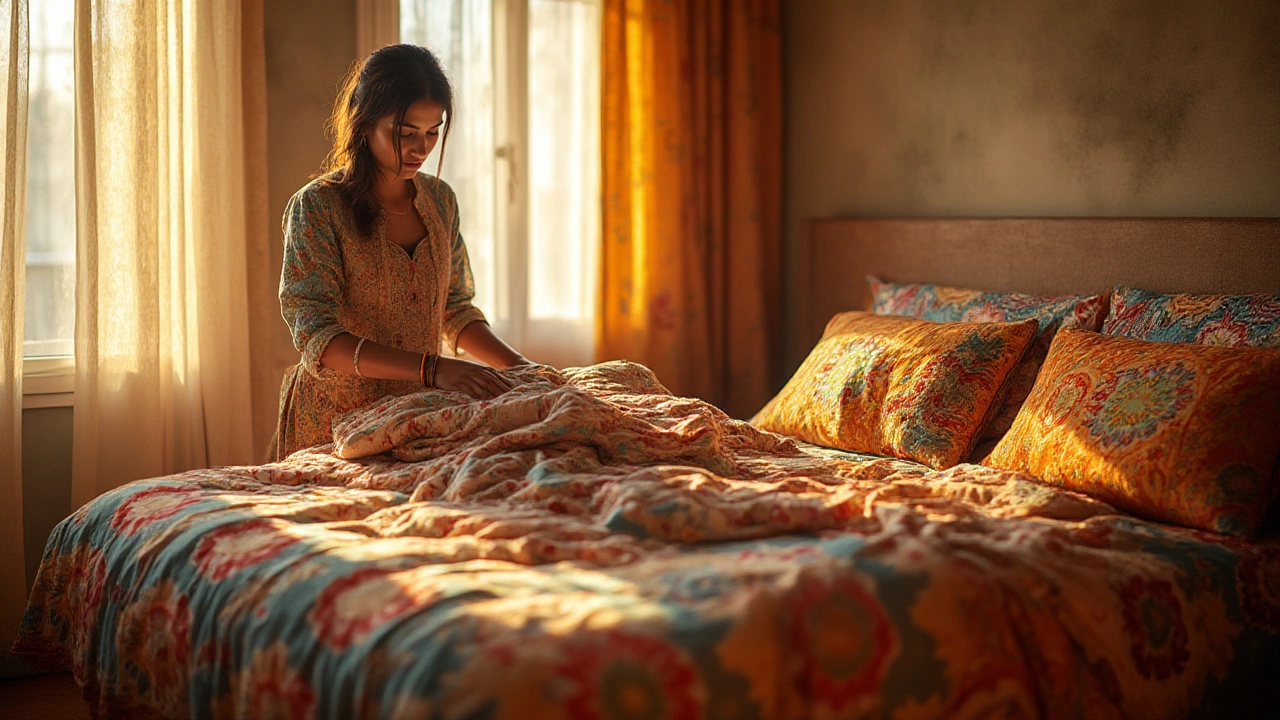
Is Bedding the Same as Linens? Key Facts About Bed Linens Explained
Are bedding and linens the same thing? Discover the real difference, what counts as bed linens, and tips for choosing quality bedroom essentials.
View MoreWhen shopping for duvet covers, removable fabric sleeves that protect and style a duvet. Also called bedspread covers, they are a core part of bedding, the set of textiles that dress a bed and tie into bedroom decor, the visual theme of a sleeping space. A good duvet cover can change a room’s vibe in minutes while keeping the inner duvet clean.
Materials range from crisp cotton percale to plush linen, soft polyester blends, and luxe silk. Each fabric falls under the broader category of home textiles, fabric products used inside a house such as curtains, towels, and pillowcases. Cotton offers breathability for hot climates, while linen adds texture that ages beautifully. High thread count cotton feels smoother but can feel heavier, whereas low‑thread‑count weaves dry faster. Sustainable options like organic cotton or Tencel reduce environmental impact and often feel softer on skin. If you prefer a glossy feel, satin‑finished polyester mimics silk without the price tag, and it resists wrinkles. Choose a weave that matches your climate, lifestyle, and how often you plan to wash – that’s the key to a lasting look.
Size matters because a duvet cover must fully envelop its duvet, the padded insert that provides warmth. Oversized covers let the duvet peek out for a casual look, while a snug fit creates a sleek, hotel‑style finish. Measure the duvet’s length, width, and thickness before you buy; most brands list standard dimensions like Twin, Full, Queen, and King, but some regions use different naming conventions (e.g., Euro‑size). Look for closure styles that suit you: hidden zip fronts keep the interior hidden, button‑down fronts add a decorative touch, and envelope folds simplify changing sheets. A mismatch can cause bunching or a lopsided drape, which defeats the purpose of a polished bedroom.
Because duvet covers are removable, they double as a protective barrier against spills, dust, and allergens. Machine‑washable cotton and polyester blends survive regular cycles, while silk or linen may need gentle detergent and lower spin speeds. Many modern covers feature anti‑bacterial or hypoallergenic treatments that further improve indoor air quality. Keeping the cover clean boosts comfort and improves sleep quality by reducing skin irritation. Rotate the cover weekly to even out wear and maintain color vibrancy – a small habit that extends the life of both cover and duvet. Always check the care label for recommended temperatures; washing at 40 °C preserves most fabrics without shrinking.
Styling your bed is a chance to express personality. Patterns range from subtle herringbone to bold geometrics, while solid colors let you play with accent pillows and throws. Seasonal swaps—light pastel covers for spring, deep jewel tones for winter—keep the space feeling fresh without a major overhaul. When you coordinate the duvet cover with existing bedroom decor, you create a cohesive look without repainting walls. Mix textures – a smooth sateen cover with a chunky knit throw – for visual interest that feels inviting. Layering a lightweight duvet cover over a heavier comforter gives you flexibility for changing temperatures.
Now that you know how fabric, fit, care, and style intertwine, you’re ready to explore specific options. Below you’ll find articles that dive deeper into choosing the perfect duvet covers, comparing materials, and mastering bedroom makeovers.

Are bedding and linens the same thing? Discover the real difference, what counts as bed linens, and tips for choosing quality bedroom essentials.
View More